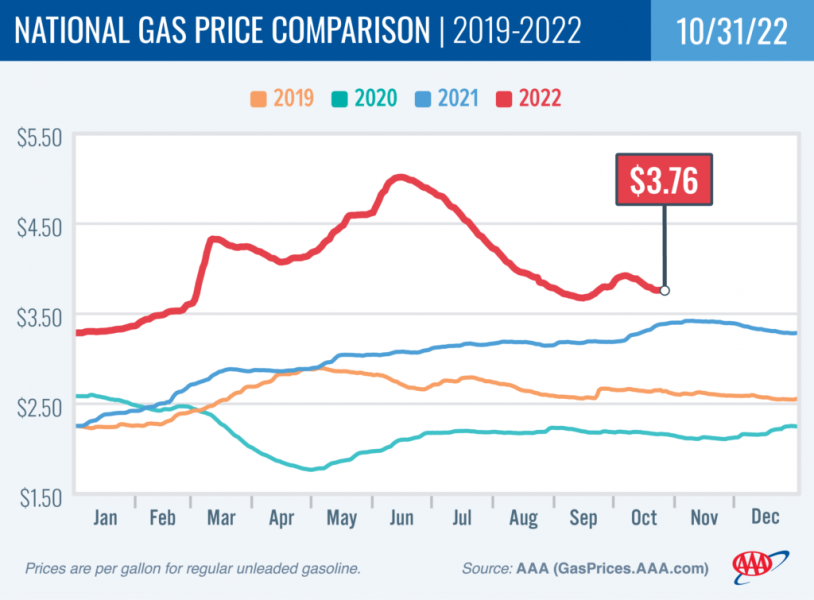Rising Gas Prices Give New Jersey Drivers a Scare This Halloween
The average cost for a gallon of regular in the state sits at $3.85 as of Monday.
VOORHEES, N.J. (October 31, 2022) – A dramatic increase in gas prices is sure to give New Jersey drivers a fright this Halloween. New Jerseyans saw a dramatic 18-cent increase over the last week, the sixth-largest rise in the country. The average cost for a gallon of regular in the state sits at $3.85 as of Monday.
Motorists are paying an average of $3.83 per gallon in Camden County; $3.82 in Cumberland County; $3.82 in Gloucester County; $3.79 in Salem County.
A month ago at this time, the statewide average in New Jersey was $3.44.
While the Garden State experienced a large increase, the national average pump price continued its recent trend by dipping three cents over the past week to hit $3.76. Tepid domestic gas demand and waffling global oil prices are the main reasons, although much lower West Coast gas prices are playing a part too.
“The recent period of tight oil inventory pushing prices higher on the West Coast is over as regional refineries completed needed maintenance,” said Andrew Gross, AAA
spokesperson. “The average gas price in California, while still high compared to the rest of the country, is 85 cents cheaper than its peak in early October. This drop has taken pressure off the national average price.”
According to data from the Energy Information Administration, gas demand rose slightly from 8.68 million b/d to 8.93 million b/d last week, and total domestic gasoline stocks decreased from 209.4 million bbl to 207.9 million bbl. Although gasoline demand is up slightly, it remains nearly 400,000 bbl lower than this time last year. Fluctuating oil prices and low demand contribute to the national average prices moving downward.
Today’s national average of $3.76 is three cents lower than a month ago and 36 cents more than a year ago.

Quick Stats
The nation’s top 10 largest weekly changes: Rhode Island (+27 cents), Alaska (−24 cents), Connecticut (+22 cents), Maine (+22 cents), New Hampshire (+20 cents), Massachusetts (+19 cents), California (−19 cents), New Jersey (+18 cents), Delaware (+16 cents) and Vermont (+15 cents).
The nation’s top 10 most expensive markets: California ($5.57), Hawaii ($5.20), Nevada ($5.00), Oregon ($4.97), Washington ($4.92), Alaska ($4.86), Idaho ($4.33), Arizona ($4.30), Utah ($4.15) and Illinois ($4.15).
Oil Market Dynamics
At the close of Friday’s formal trading session, WTI decreased by $1.18 to settle at $87.90. A lower dollar contributed to price increases earlier last week; however, market concerns about global crude demand, after China announced more COVID lockdowns, sent prices lower at the end of the week. For this week, persistent market concerns that economic growth will stall or decline, alongside decreased crude oil demand, could put downward pressure on prices.
